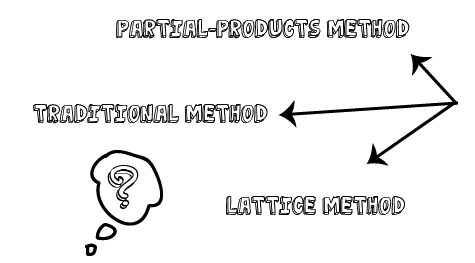
This past week my third grade class investigated different ways to multiply numbers. Before diving into this concept I asked the students their thoughts on multiplication. A few students explained to the class their view on the topic of multiplication.
- repeated addition
- double or triple “hopping”
- using arrays
- “timesing”
- Increase the number by “a lot”
Most students were able to showcase examples of the above. Even though their vocabulary wasn’t exactly spot-on, students were able to come to the whiteboard and show their thinking.
I received different responses from the students when asking them about multi-digit multiplication. Actually, it was more of a lack of response. I feel like some of this is due to exposure. A few students raised their hands and asked to show their process to multiply multi-digit numbers. These students showcased their ability to use the traditional algorithm. The class reviewed this method with a few examples. Although students were finding the correct product they had trouble explaining the process. Students weren’t able to communicate why it worked or another method to find a solution.
On Tuesday my class started to explore the partial-products algorithm. Students were able to decompose individual products and find the sum. This made sense to students. Students were able to connect an area model with the partial-products method. They started to write number models right next to each partial-product.
Later in the week students were introduced to the lattice method. This method seemed “fun” for the students, but didn’t make as much sense as the partial-products method. Students were able draw the boxes and create diagonals to find the product. Some students had trouble with laying the boxes out before multiplying.
During the last day of the week students were asked to explain in written form how to multiply multi-digit numbers. Even though all of the students could use the traditional, partial-products and lattice methods, they were stuck for a bit. Soon, most students started to lean towards using the partial-products method to explain how and why this method works. I asked one student in particular why it made sense and she said “I can see it visually and in number form.” Although most students were able to use the other methods effectively they didn’t seem confident enough to explain why the strategies worked.
Students will be expected to multiply multi-digit numbers on the next unit assessment. The method to multiply these numbers will be determined by the student, but I’m wondering how many will gravitate towards the strategy (not just the process) that they understand.



